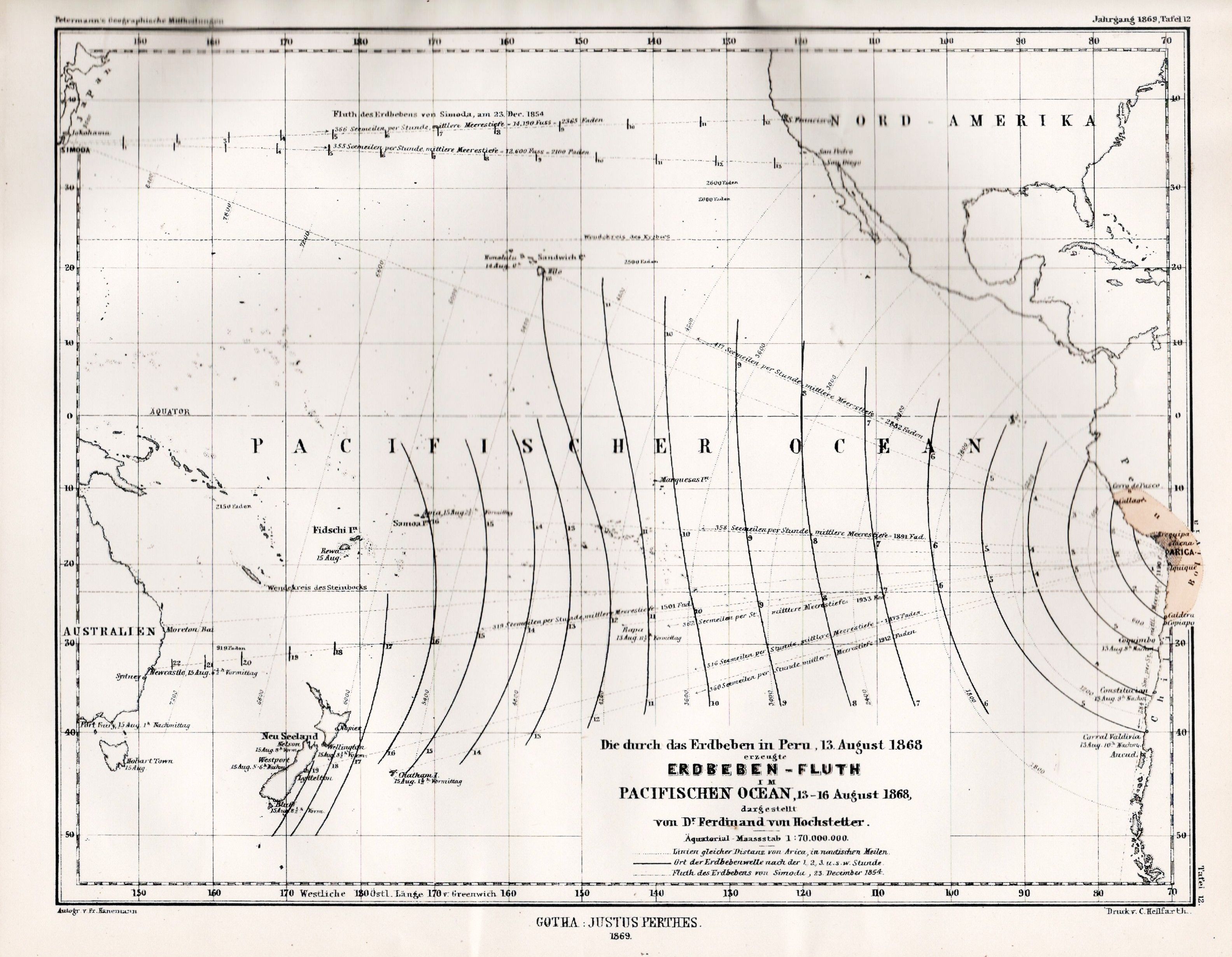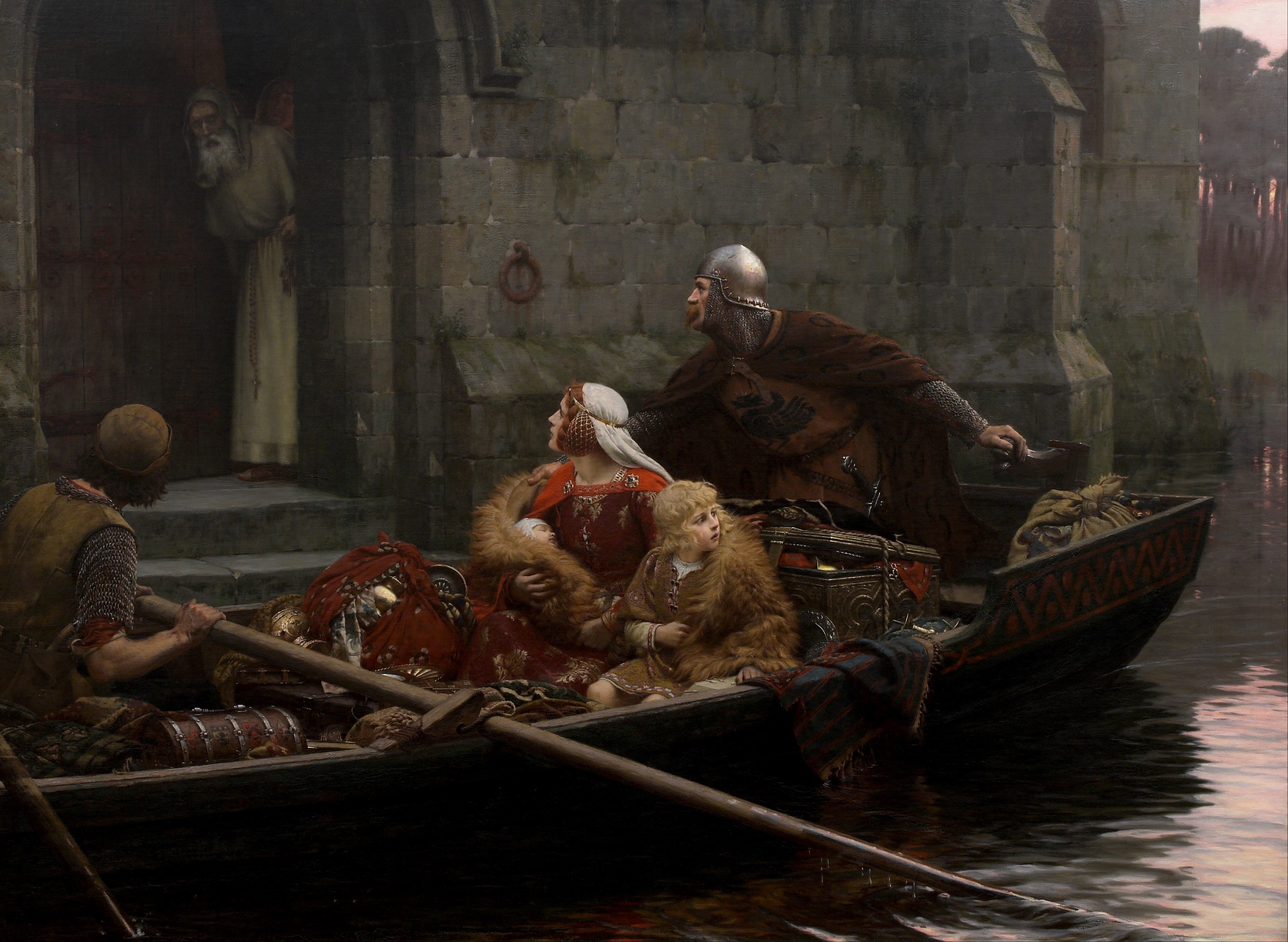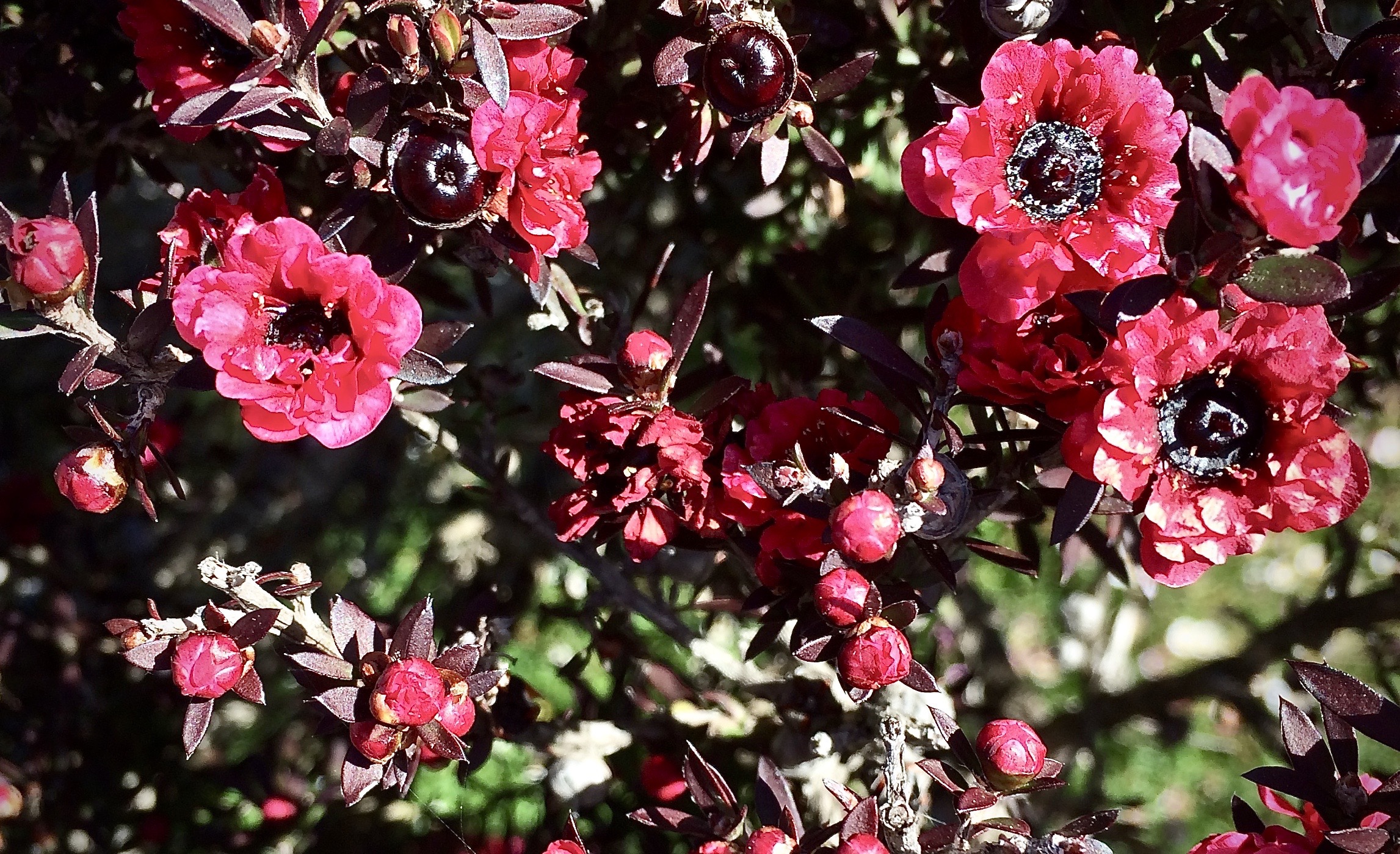|
Albert Park Volcano
The Albert Park Volcano was one of the volcanoes in the Auckland volcanic field in New Zealand. A small volcano that erupted approximately 145,000 years ago, the volcanic remnants were quarried during the early colonial history of Auckland between 1840 and 1869. The volcano was dwarfed by the pre-volcanic sandstone ridge of Albert Park directly to the south-east, and only recognised as volcanic by Ferdinand von Hochstetter when he visited Auckland in 1859. Geology The volcano erupted an estimated 145,000 years ago. The initial phase began with wet, explosive eruptions that deposited up to 8 metres of a thick ash layer around the Queen Street Valley area. Later eruptions changed to a dry fountaining style, allowing a small scoria mound to form. A lava flow from the western base of the cone flowed down the Queen Street Valley, which dammed the Waihorotiu Stream and formed a swamp where the stream met the Waitematā Harbour, creating an alluvial flat between Victoria Stree ... [...More Info...] [...Related Items...] OR: [Wikipedia] [Google] [Baidu] |
Ferdinand Von Hochstetter
Christian Gottlieb Ferdinand Ritter von Hochstetter (30 April 1829 – 18 July 1884) was a German-Austrian geologist. Career Having received his early education at the evangelical seminary at Maulbronn, Ferdinand proceeded to the University of Tübingen and the Tübinger Stift; there, under Friedrich August von Quenstedt, the interest he already felt in geology became permanently fixed, and he obtained his doctor's degree and a travelling scholarship. In 1852 he joined the staff of the Imperial Geological Survey of Austria and was engaged until 1856 in parts of Bohemia, especially in the Bohemian Forest, and in the Fichtel Hills and Karlsbad mountains. His excellent reports established his reputation. Thus he came to be chosen as geologist to the Novara expedition (1857–59), and made numerous valuable observations in the voyage round the world. The Novara arrived in New Zealand on 22 December 1858. Almost immediately he met the German scientist Julius von Haast who had al ... [...More Info...] [...Related Items...] OR: [Wikipedia] [Google] [Baidu] |
Aotea Square
Aotea Square is a large paved public area in the CBD of Auckland, New Zealand. Officially opened in 1979 by Sir Dove-Myer Robinson next to Queen Street, it is used for open-air concerts and gatherings, and markets and political rallies. In November 2010, a major redevelopment of Aotea Square was completed. The square was redesigned to make it appropriate for use by crowds of up to 20,000 people. Its name is derived from ''Motu Aotea'', the Māori name for Great Barrier Island, which is the largest offshore island of New Zealand, approximately 90 km from downtown Auckland. History Construction The square was created in 1979, with a large part of it being the former end of Grey's Avenue, which used to connect directly to Queen Street – a large underground carpark with 930 spaces had been erected underneath in 1975. In 2000 a competition for a redesign was held, but in 2004, before the winning design by Ted Smyth and Associates (including Rod Barnett and Dr Dushko ... [...More Info...] [...Related Items...] OR: [Wikipedia] [Google] [Baidu] |
Auckland Art Gallery
Auckland Art Gallery Toi o Tāmaki is the principal public gallery in Auckland, New Zealand. It has the most extensive collection of national and international art in New Zealand and frequently hosts travelling international exhibitions. Set below the hilltop Albert Park in the central-city area of Auckland, the gallery was established in 1888 as the first permanent art gallery in New Zealand. The building originally housed both the Auckland Art Gallery and the Auckland public library, and opened with collections donated by benefactors Governor Sir George Grey and James Tannock Mackelvie. This was the second public art gallery in New Zealand, after the Dunedin Public Art Gallery, which opened three years earlier in 1884. Wellington's New Zealand Academy of Fine Arts opened in 1892 and a Wellington Public Library in 1893. In 2009, it was announced that the museum received a donation from American businessman Julian Robertson, valued at over $100 million, the largest ever o ... [...More Info...] [...Related Items...] OR: [Wikipedia] [Google] [Baidu] |
The New Zealand Herald
''The New Zealand Herald'' is a daily newspaper published in Auckland, New Zealand, owned by New Zealand Media and Entertainment, and considered a newspaper of record for New Zealand. It has the largest newspaper circulation of all newspapers in New Zealand, peaking at over 200,000 copies in 2006, although circulation of the daily ''Herald'' had declined to 100,073 copies on average by September 2019. Its main circulation area is the Auckland region. It is also delivered to much of the upper North Island including Northland, Waikato and King Country. History ''The New Zealand Herald'' was founded by William Chisholm Wilson, and first published on 13 November 1863. Wilson had been a partner with John Williamson in the ''New Zealander'', but left to start a rival daily newspaper as he saw a business opportunity with Auckland's rapidly growing population. He had also split with Williamson because Wilson supported the war against the Māori (which the ''Herald'' termed "the ... [...More Info...] [...Related Items...] OR: [Wikipedia] [Google] [Baidu] |
World War II
World War II or the Second World War, often abbreviated as WWII or WW2, was a world war that lasted from 1939 to 1945. It involved the vast majority of the world's countries—including all of the great powers—forming two opposing military alliances: the Allies and the Axis powers. World War II was a total war that directly involved more than 100 million personnel from more than 30 countries. The major participants in the war threw their entire economic, industrial, and scientific capabilities behind the war effort, blurring the distinction between civilian and military resources. Aircraft played a major role in the conflict, enabling the strategic bombing of population centres and deploying the only two nuclear weapons ever used in war. World War II was by far the deadliest conflict in human history; it resulted in 70 to 85 million fatalities, mostly among civilians. Tens of millions died due to genocides (including the Holocaust), starvation, ma ... [...More Info...] [...Related Items...] OR: [Wikipedia] [Google] [Baidu] |
Albert Park Tunnels
The Albert Park tunnels are found largely beneath Albert Park, in central Auckland, New Zealand. The tunnels were constructed as air raid shelters during the Second World War. At the conclusion of the war they were sealed to prevent vandalism or misuse by the public, and as a protection against carbon dioxide build-up or tunnel collapse. Conception New Zealand's involvement in the war began in 1939, and with Axis naval activity occurring in New Zealand waters, domestic defence plans were necessary, with much capital being invested. Matters became urgent with the entry of Japan into the war in 1941. A number of coastal defences were already in place throughout the country, with a concentration in Auckland, and Auckland City Council felt the need for air raid shelters in the central city, in preparation for Japanese attack. Work began in December 1941, and by January 1942, 16,300 feet of slit trenches had been dug around the city. Additional shelters were created in basemen ... [...More Info...] [...Related Items...] OR: [Wikipedia] [Google] [Baidu] |
Leptospermum Scoparium
''Leptospermum scoparium'', commonly called mānuka, () mānuka myrtle, New Zealand teatree, broom tea-tree, or just tea tree, is a species of flowering plant in the myrtle family Myrtaceae, native to New Zealand (including the Chatham Islands) and south-east Australia. Its nectar produces Mānuka honey. Description Mānuka is a prolific shrub-type tree and is often one of the first species to regenerate on cleared land. It is typically a shrub growing to tall, but can grow into a moderately sized tree, up to or so in height. It is evergreen, with dense branching and small leaves long and broad, with a short spine tip. The flowers are white, occasionally pink, – rarely up to – in diameter, with five petals. The wood is tough and hard. Mānuka is often confused with the related species kānuka (''Kunzea ericoides'') – the easiest way to tell the difference between the two species in the field is to feel their foliage – mānuka leaves are prickly, while kānuka lea ... [...More Info...] [...Related Items...] OR: [Wikipedia] [Google] [Baidu] |
Albert Barracks
The Albert Barracks was a major British military installation that overlooked Auckland, New Zealand, from the mid-1840s to 1870, during the city's early colonial period. The perimeter wall was built between 1846 and the early 1850s, in the area now bounded by Kitchener Street, Waterloo Quadrant, Symonds Street, and Wellesley Street East, according to Colonel Thomas Rawlings Mould's 1860 map of Defensible Works round Auckland. The site is now mostly occupied by Albert Park and the University of Auckland's City Campus, and Princes Street runs through the centre of it. All that remains of the barracks structures is part of the perimeter wall, which is on the university campus. Construction The fortification was built to reassure the people of Auckland following the 1845–1846 Flagstaff War in the Bay of Islands; at the time, Auckland was the capital of New Zealand. Prior to this, Fort Britomart, a headland on the Waitematā Harbour adjacent to the town of Auckland served as the ... [...More Info...] [...Related Items...] OR: [Wikipedia] [Google] [Baidu] |
Capital Of New Zealand
Wellington has been the capital of New Zealand since 1865. New Zealand's first capital city was Old Russell (Okiato) in 1840–41. Auckland was the second capital from 1841 until 1865, when Parliament was permanently moved to Wellington after an argument that persisted for a decade. As the members of parliament could not agree on the location of a more central capital, Wellington was decided on by three Australian commissioners. Okiato Okiato or Old Russell is a small holiday spot in the Bay of Islands, south of present-day Russell, which was then known as Kororareka. Okiato was New Zealand's first national capital, for a short time from 1840 to 1841, before the seat of government was moved to Auckland. William Hobson arrived in New Zealand on 29 January 1840, the date now celebrated as the Auckland Anniversary Day. On the following day, as Lieutenant-Governor he proclaimed British Sovereignty in New Zealand. 30 January 1840 was the day that the Union Jack was flown on the ma ... [...More Info...] [...Related Items...] OR: [Wikipedia] [Google] [Baidu] |
Treaty Of Waitangi
The Treaty of Waitangi ( mi, Te Tiriti o Waitangi) is a document of central importance to the history, to the political constitution of the state, and to the national mythos of New Zealand. It has played a major role in the treatment of the Māori population in New Zealand, by successive governments and the wider population, a role that has been especially prominent from the late 20th century. The treaty document is an agreement, not a treaty as recognised in international law and it has no independent legal status, being legally effective only to the extent it is recognised in various statutes. It was first signed on 6 February 1840 by Captain William Hobson as consul for the British Crown and by Māori chiefs () from the North Island of New Zealand. The treaty was written at a time when the New Zealand Company, acting on behalf of large numbers of settlers and would-be settlers, were establishing a colony in New Zealand, and when some Māori leaders had petitioned the Briti ... [...More Info...] [...Related Items...] OR: [Wikipedia] [Google] [Baidu] |
Kāinga
A kāinga ( Southern Māori ''kaika'' or ''kaik'') is the traditional form of village habitation of pre-European Māori in New Zealand. It was unfortified or only lightly fortified, and over time became less important to the well-defended pā. Description Kāinga were generally unfortified or only lightly fortified, as opposed to the well-defended pā. They were generally coastal, and often found near to a river mouth. The settlement was generally occupied by members of one ''hapū'' (sub-tribe), which would identify itself with the nearest mountain and river (even in modern Māori, when meeting someone new, "what is your mountain?" is not an unusual question). Kāinga were often regarded as only semi-permanent settlements, and they were often abandoned. Reasons for abandonment included invasion by other iwi or resource shortages. Traditionally, Māori were often semi-nomadic, with entire communities moving at harvest or to hunt, using the kāinga as a stable home base. An entir ... [...More Info...] [...Related Items...] OR: [Wikipedia] [Google] [Baidu] |
Tāmaki Māori
Tāmaki Māori are Māori ''iwi'' and ''hapū'' (tribes and sub-tribes) who have a strong connection to Tāmaki Makaurau (the Auckland Region), and whose rohe was traditionally within the region. Among Ngā Mana Whenua o Tāmaki Makaurau (the Māori tribes of Auckland), also known as the Tāmaki Collective, there are thirteen iwi and hapū, organised into three rōpū (collectives), however Tāmaki Māori can also refer to subtribes and historical iwi not included in this list. Ngāti Whātua Rōpū Ngāti Whātua descend from the '' Māhuhu-ki-te-rangi'' waka, which landed north of the Kaipara Harbour. The rōpū includes Ngāti Whātua o Kaipara, Ngāti Whātua Ōrākei and Te Rūnanga o Ngāti Whātua. Te Rūnanga o Ngāti Whātua is a Māori Trust Board formed in the mid 2000s to represent the interests of Ngāti Whātua iwi and hapū collectively, including those outside of Ngāti Whātua o Kaipara and Ngāti Whātua Ōrākei. The rūnanga represents Ngā Oho, Ngāi Tāh ... [...More Info...] [...Related Items...] OR: [Wikipedia] [Google] [Baidu] |


.jpg)





